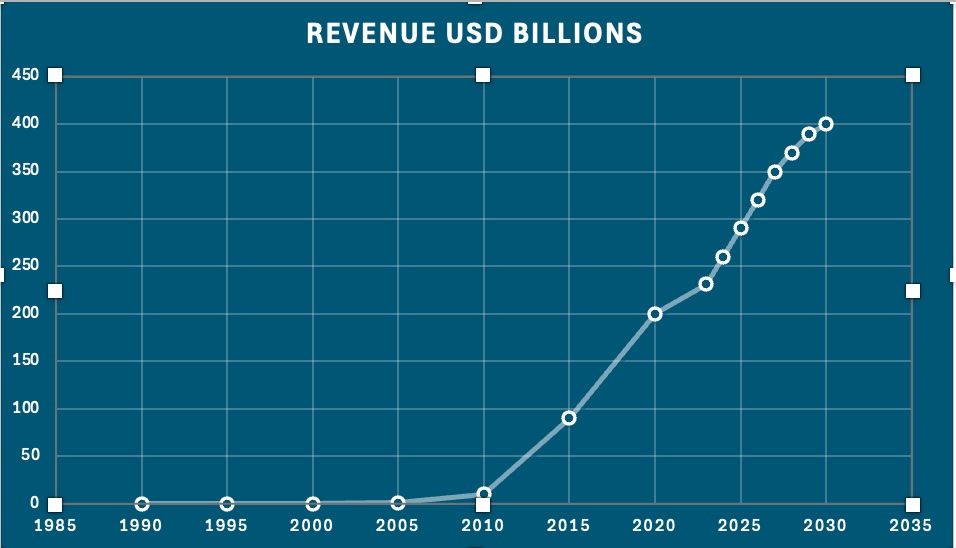The Titans of Social Media: Growth, Style, and Industry Trends
Social media has transformed from a digital experiment into a cornerstone of modern communication, entertainment, and commerce. Over the past two decades, platforms like Facebook, YouTube, Instagram, TikTok, and X (formerly Twitter) have reshaped how we connect, consume, and create. Here, we take an in-depth look at the top five social media giants, exploring their origins, growth trajectories, unique features, and what the future holds.
1. Facebook: The Legacy Leader
Launch Date: February 2004
Founder(s): Mark Zuckerberg, Eduardo Saverin, Andrew McCollum, Dustin Moskovitz, and Chris Hughes
Monthly Active Users (2024): 3.2 billion
Annual Revenue (2023): $116.6 billion
Advertisers (2023): 10 million+
Facebook started as a college-exclusive network and rapidly expanded into a global phenomenon. Its growth, while exponential in its early years, has plateaued in some regions due to market saturation and competition. However, its parent company, Meta, has diversified through acquisitions like Instagram and WhatsApp. Facebook’s largest user base is now concentrated in developing markets like India, Indonesia, and Africa.
Unique Features:
• Comprehensive ad targeting and analytics tools.
• Integration with other Meta platforms for seamless messaging and advertising.
• A mix of text, image, and video-sharing capabilities.
Predicted Growth: While Facebook’s user base growth may slow, its revenue from AI-driven advertising and monetization of creator content is expected to rise, reaching $150 billion by 2028.
2. YouTube: The Video Vanguard
Launch Date: February 2005
Founder(s): Steve Chen, Chad Hurley, and Jawed Karim
Monthly Active Users (2024): 2.7 billion
Annual Revenue (2023): $40 billion
Advertisers (2023): 5 million+
From its first video, Me at the Zoo, to billions of hours of content consumed daily, YouTube remains the premier platform for video content. Its growth is fueled by user-generated content, music, gaming, and professional creators. Over 500 hours of video are uploaded every minute.
Unique Features:
• Monetization options for creators via ads, memberships, and merchandise.
• A robust recommendation algorithm driven by AI.
• YouTube Shorts, competing directly with TikTok and Instagram Reels.
Predicted Growth: YouTube’s dominance in video is expected to grow as 5G adoption and AR/VR integration expand global access. Revenue is projected to exceed $60 billion by 2030.
3. Instagram: The Trendsetter
Launch Date: October 2010
Founder(s): Kevin Systrom and Mike Krieger
Monthly Active Users (2024): 2.35 billion
Annual Revenue (2023): $40 billion (under Meta)
Advertisers (2023): 4 million+
Instagram’s visually-driven approach captured the attention of Millennials and Gen Z, becoming a hub for lifestyle, fashion, food, and travel influencers. Features like Stories and Reels mimic Snapchat and TikTok, keeping the platform relevant amidst rising competition.
Unique Features:
• High visual appeal, catering to photographers, artists, and lifestyle brands.
• Strong influencer marketing ecosystem.
• Advanced e-commerce integration through Instagram Shops.
Predicted Growth: With increasing integration of AI and e-commerce, Instagram is expected to see moderate user growth but significant ad revenue growth, projected to hit $70 billion by 2030.
4. TikTok: The Disruptive Upstart
Launch Date: September 2016
Founder(s): Zhang Yiming (Bytedance)
Monthly Active Users (2024): 1.7 billion
Annual Revenue (2023): $18 billion
Advertisers (2023): 1.5 million+
TikTok revolutionized social media with its short, engaging video format. Its algorithm, which tailors content to individual preferences with uncanny accuracy, keeps users hooked for hours. The platform’s appeal to Gen Z has made it a cultural juggernaut.
Unique Features:
• Short-form video content with a focus on trends and challenges.
• Viral potential through music, filters, and effects.
• Advanced AI-driven content recommendations.
Predicted Growth: TikTok is projected to surpass 2 billion users by 2026. Its annual revenue could double to $36 billion by 2030, especially as it expands e-commerce and advertising capabilities.
5. X (Formerly Twitter): The Newsroom of Social Media
Launch Date: March 2006
Founder(s): Jack Dorsey, Biz Stone, Evan Williams, and Noah Glass
Monthly Active Users (2024): 450 million
Annual Revenue (2023): $3 billion
Advertisers (2023): 200,000+
Known for real-time updates and breaking news, X is the go-to platform for public discourse. Recent ownership changes under Elon Musk have introduced paid subscriptions (X Premium), aiming to reduce reliance on traditional ad revenue.
Unique Features:
• Real-time content delivery for news, sports, and events.
• Character-limited posts encourage concise communication.
• Paid subscriptions for premium features and verification.
Predicted Growth: With shifts toward a subscription model and community monetization, X could see slower user growth but potentially stabilize its revenue streams around $5 billion by 2028.
Comparative Table: Key Metrics
Platform Launch Year Users (2024, in billions) Revenue (2023, in billions) Unique Features
Facebook 2004 3.2 $116.6 Ad targeting, global scale
YouTube 2005 2.7 $40 Long/short videos, monetization
Instagram 2010 2.35 $40 E-commerce, influencers
TikTok 2016 1.7 $18 Viral short-form content
X 2006 0.45 $3 Real-time updates, paid tiers
Insert comparative bar graph of revenue and user numbers here.
Industry Growth Projections
The global social media industry is expected to grow from $231 billion in 2023 to $400 billion by 2030. Key drivers include:
• Expansion into emerging markets: Africa, Asia-Pacific, and South America show strong adoption trends.
• AI integration: More sophisticated algorithms for content recommendations and advertising.
• E-commerce partnerships: Social commerce is set to redefine online shopping.
• AR/VR technologies: Platforms like Meta’s Horizon Worlds could change the way we engage socially and commercially.
Insert industry growth trend graph here.
Conclusion: A United but Diverse Ecosystem
While the top five social media platforms have unique styles and niches, they share a common thread of connecting people and creating opportunities for expression. The industry’s growth highlights the demand for diverse, dynamic platforms catering to billions of users worldwide. As technology evolves, these platforms will continue to innovate, influencing how we interact, work, and play in a digital-first world.
Include collage of logos and screenshots showcasing unique features.
Suggested Chart Details:
• Chart Type: Line chart or bar graph.
• X-Axis: Years (1985–2030).
• Y-Axis: Revenue in billion USD.
• Trend Line: Highlight consistent upward growth.



